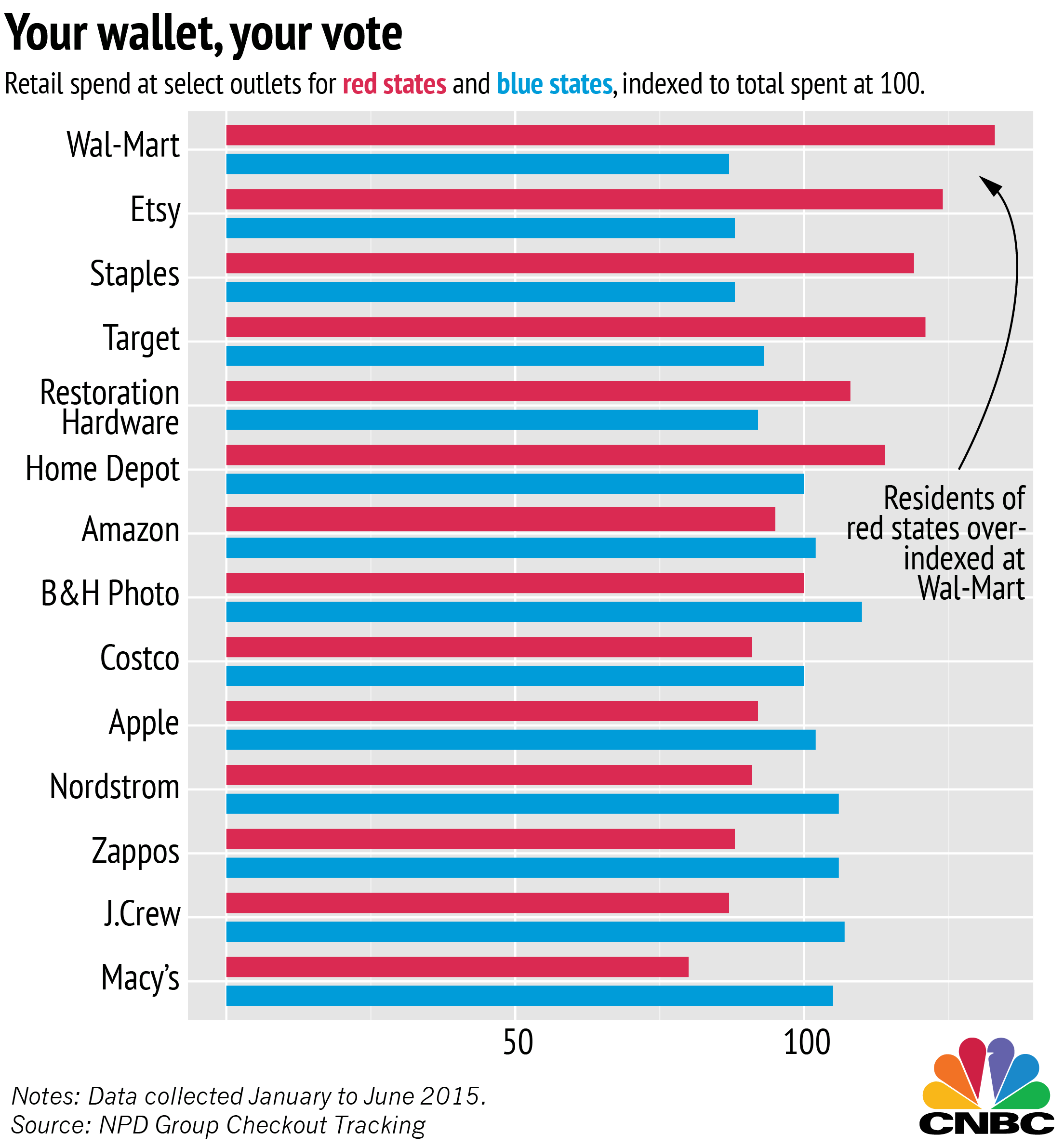So even with close election results, different shopping patterns emerge. Residents of blue states over-indexed online retailer Gilt by 160, meaning shoppers were 60 percent more likely to be from a state that voted Obama. Red states over-indexed by 150 at both Wal-Mart and QVC, a home-shopping channel.
"Home-shopping networks are really about a person connection," Mantis said, pointing out that many of the red-state stores cater heavily to family-oriented shopping. "The blue states are more brands and less a personal connection. That struck me as a different interaction for the shoppers."
Even in terms of category the differences can be stark. Residents of blue states over-indexed on jewelry and watches by 133 and gift cards by 125. In another study, this one with a sample size of 50,000, NPD figures show that blue states over-index total spending on beauty products at 145. That residents of red states spent nearly half what blue staters did on shampoo and makeup. On the flip side, red-staters over-indexed 125 points in the automotive spending.
One surprising finding was that red states over-index in shopping at Etsy, the Brooklyn-based site that allows craftspeople to hawk their wares. Amazon recently launched "Handmade at Amazon," the megaseller's attempt to compete with the artisanal marketplace.
Mantis speculated that it could be a matter of scarcity that drives red-staters to the site.
"There are few places in some of the red states and rural areas to find that kind of thing," he said. Etsy is really "opening up a buy-in channel that isn't available outside of urban areas."








